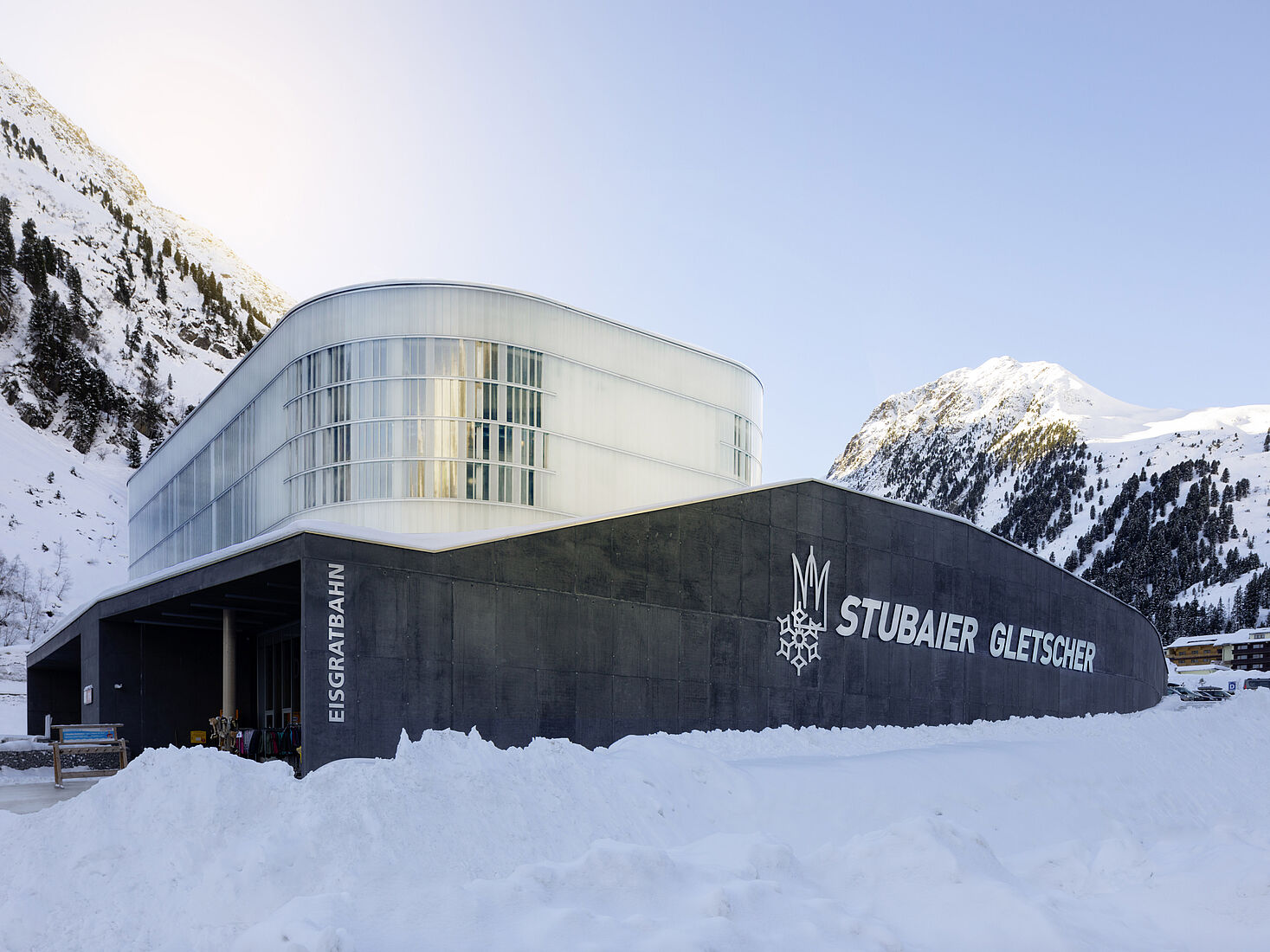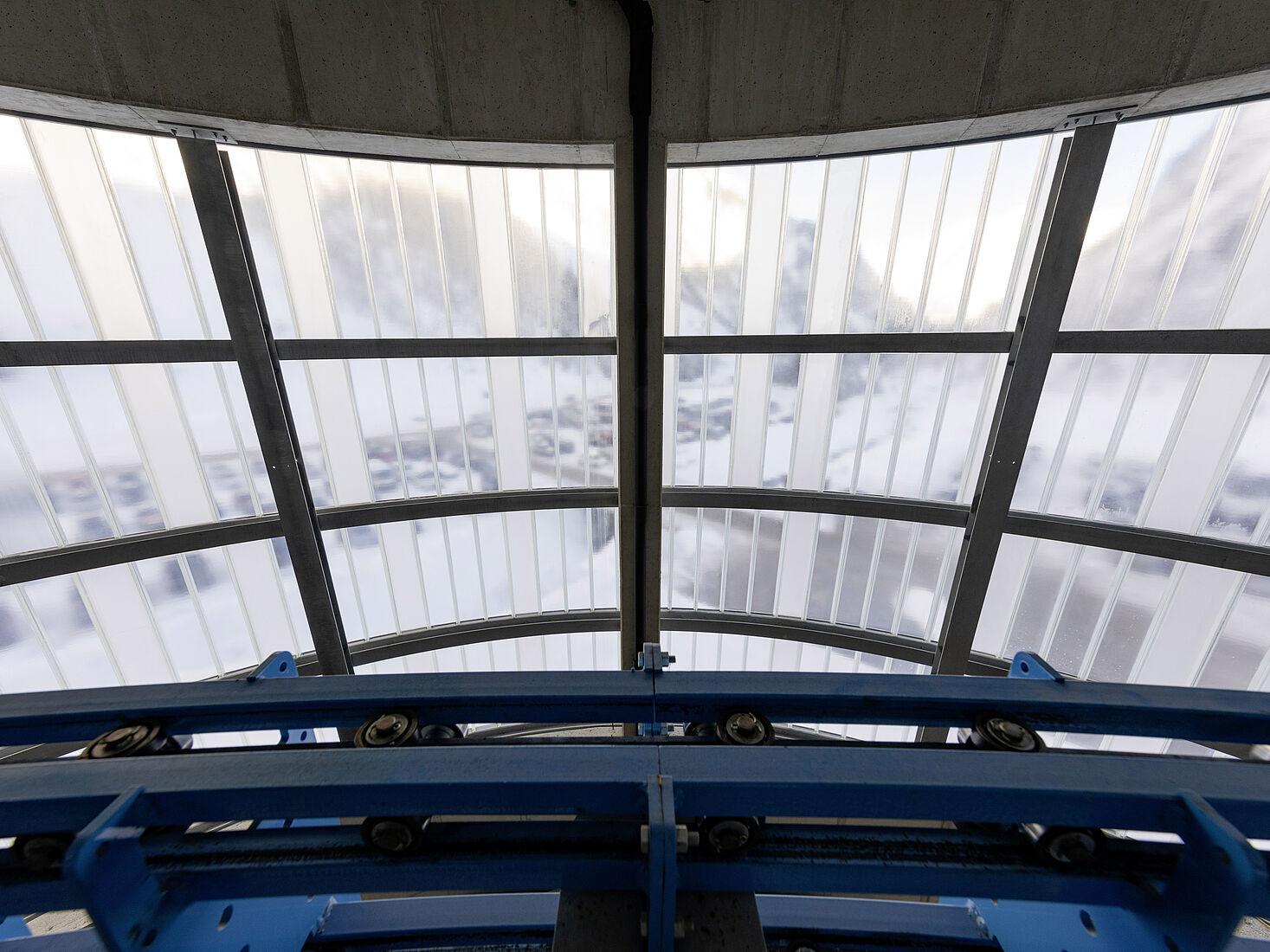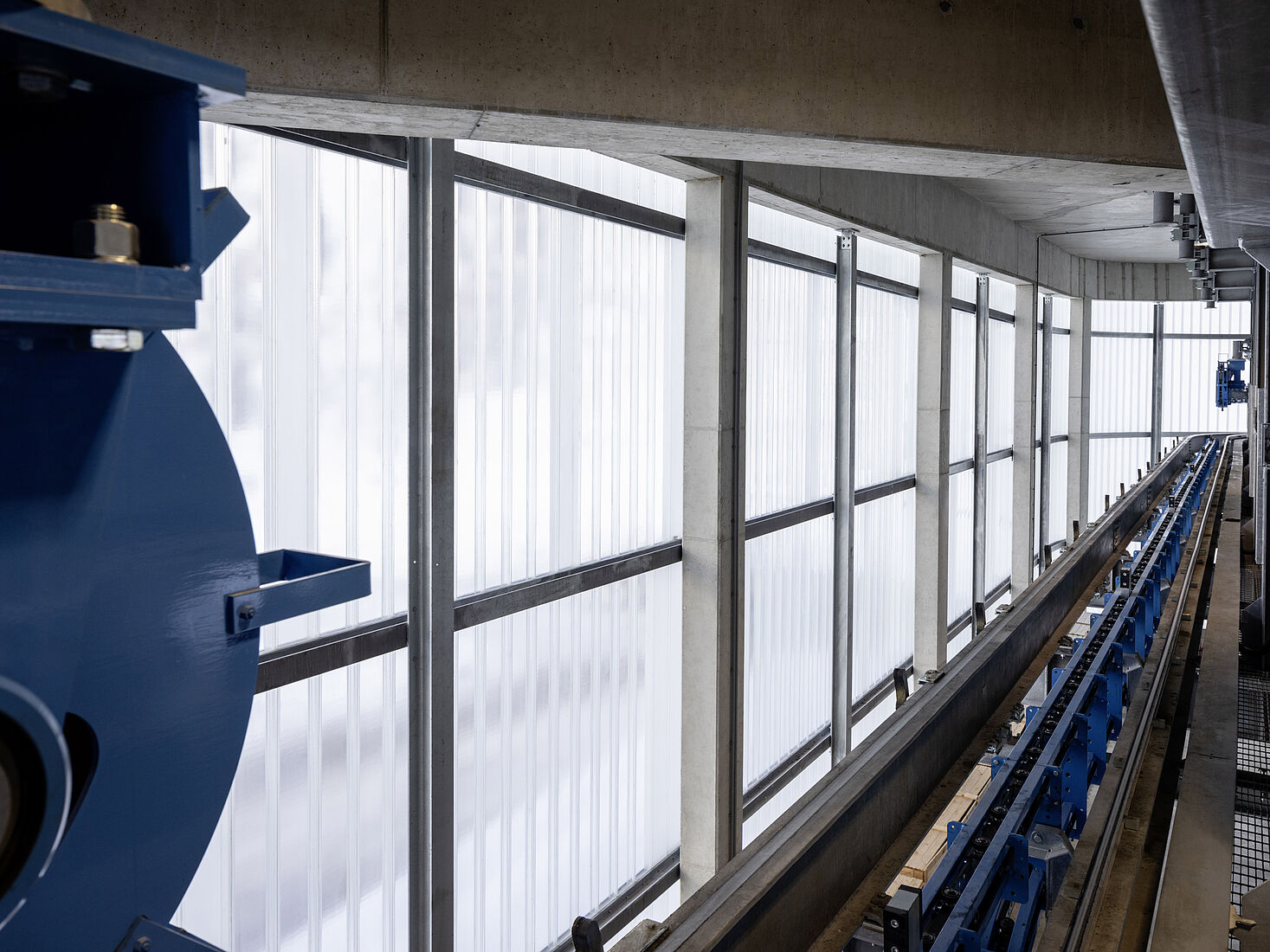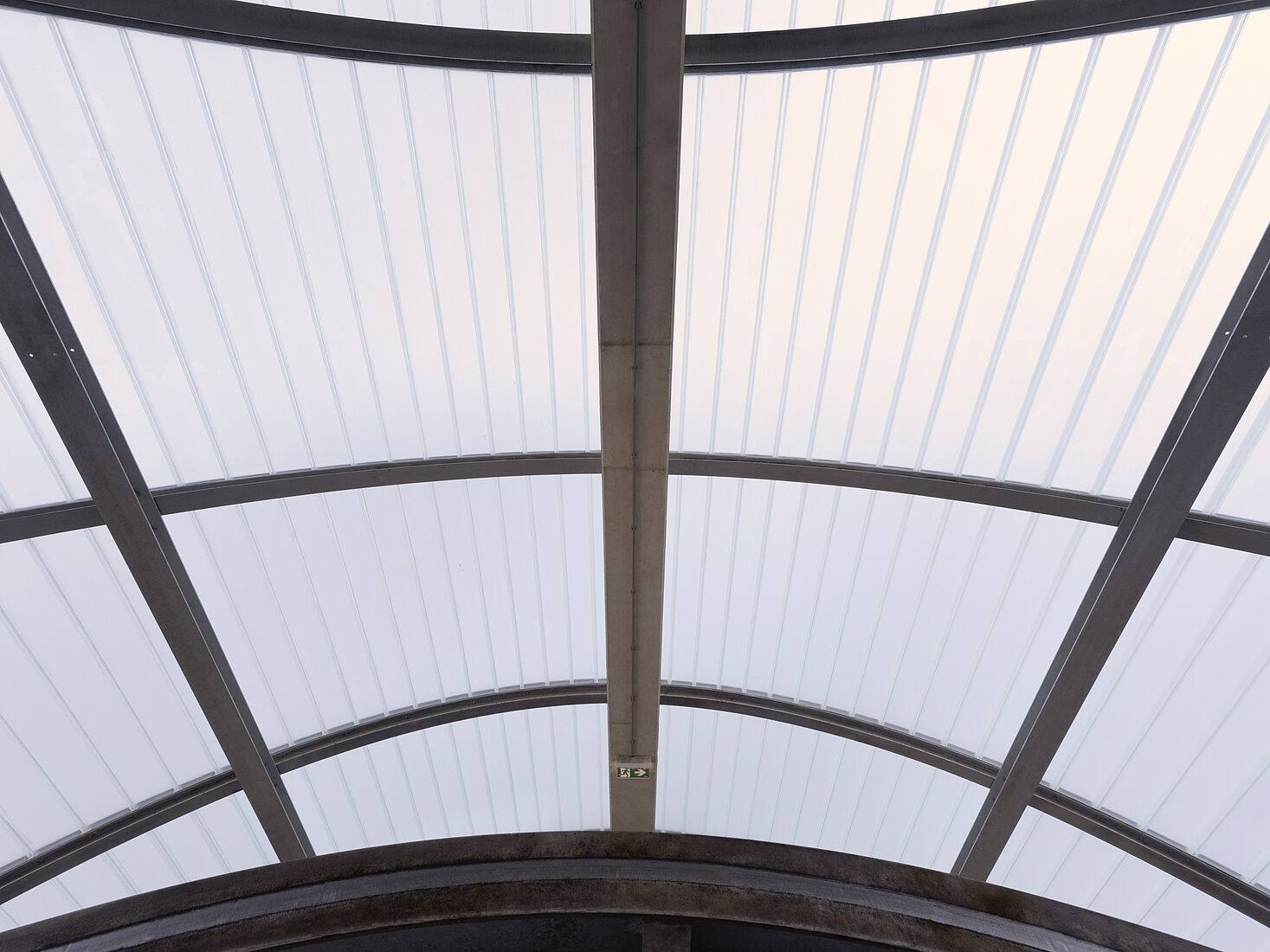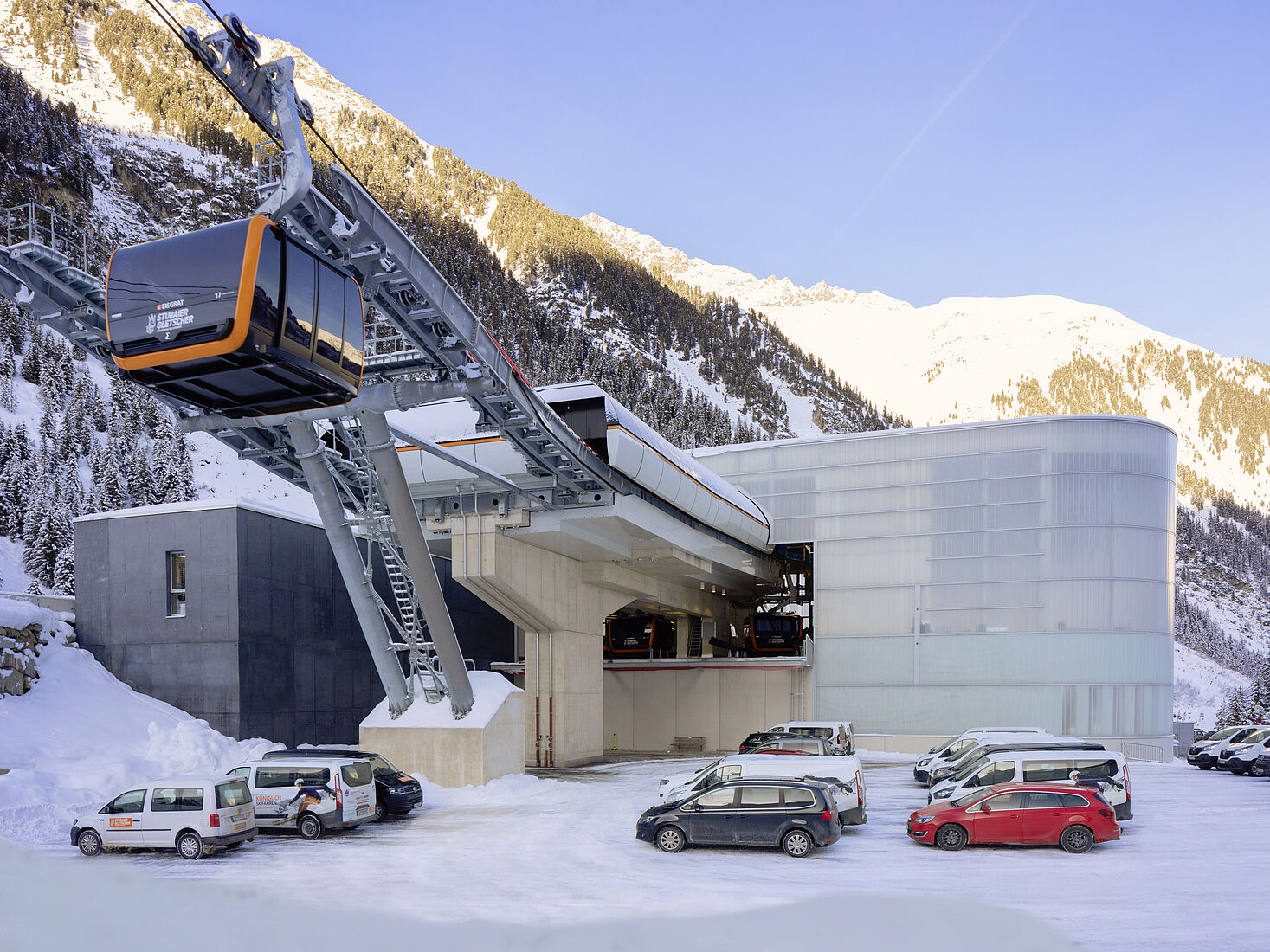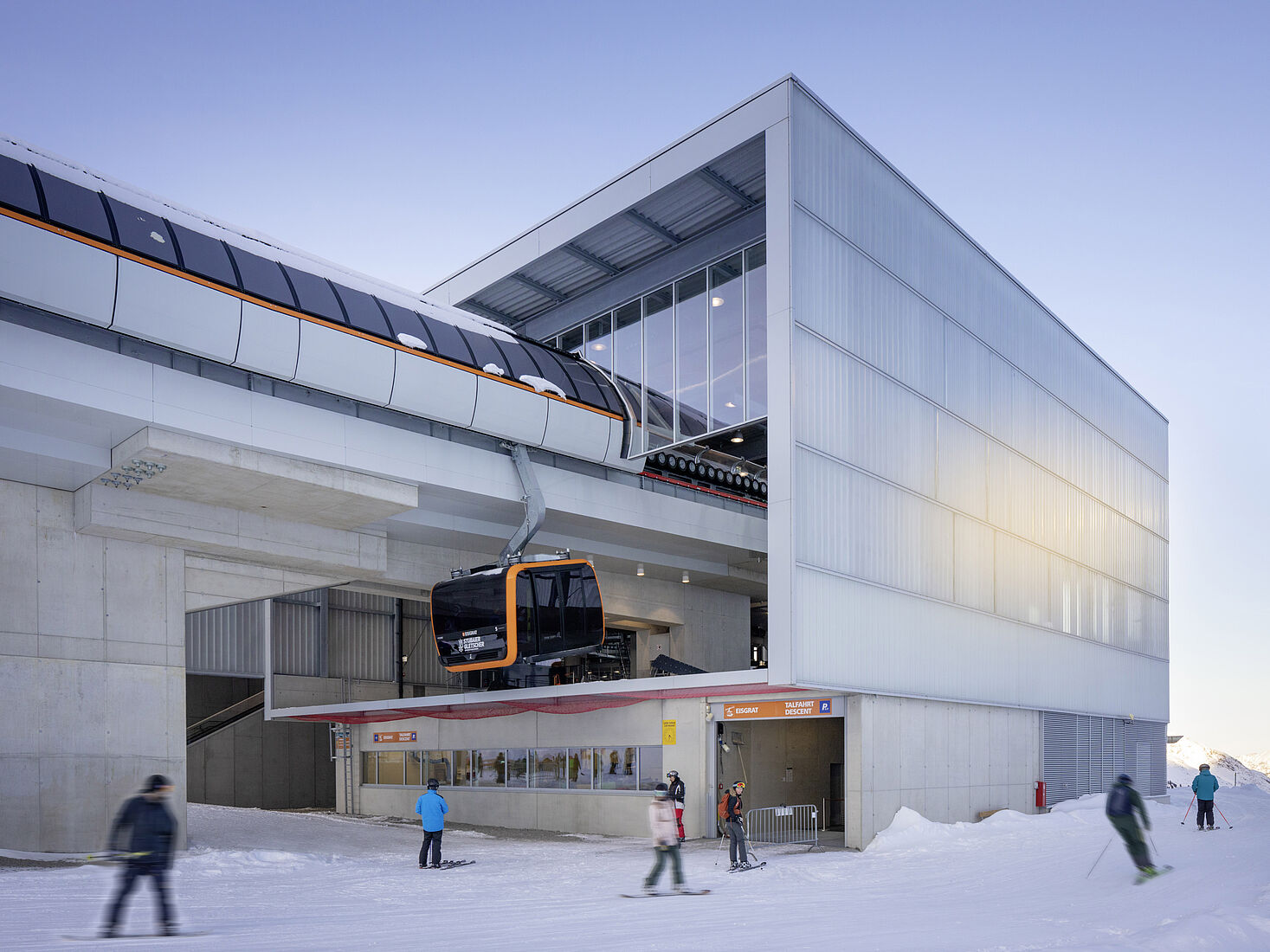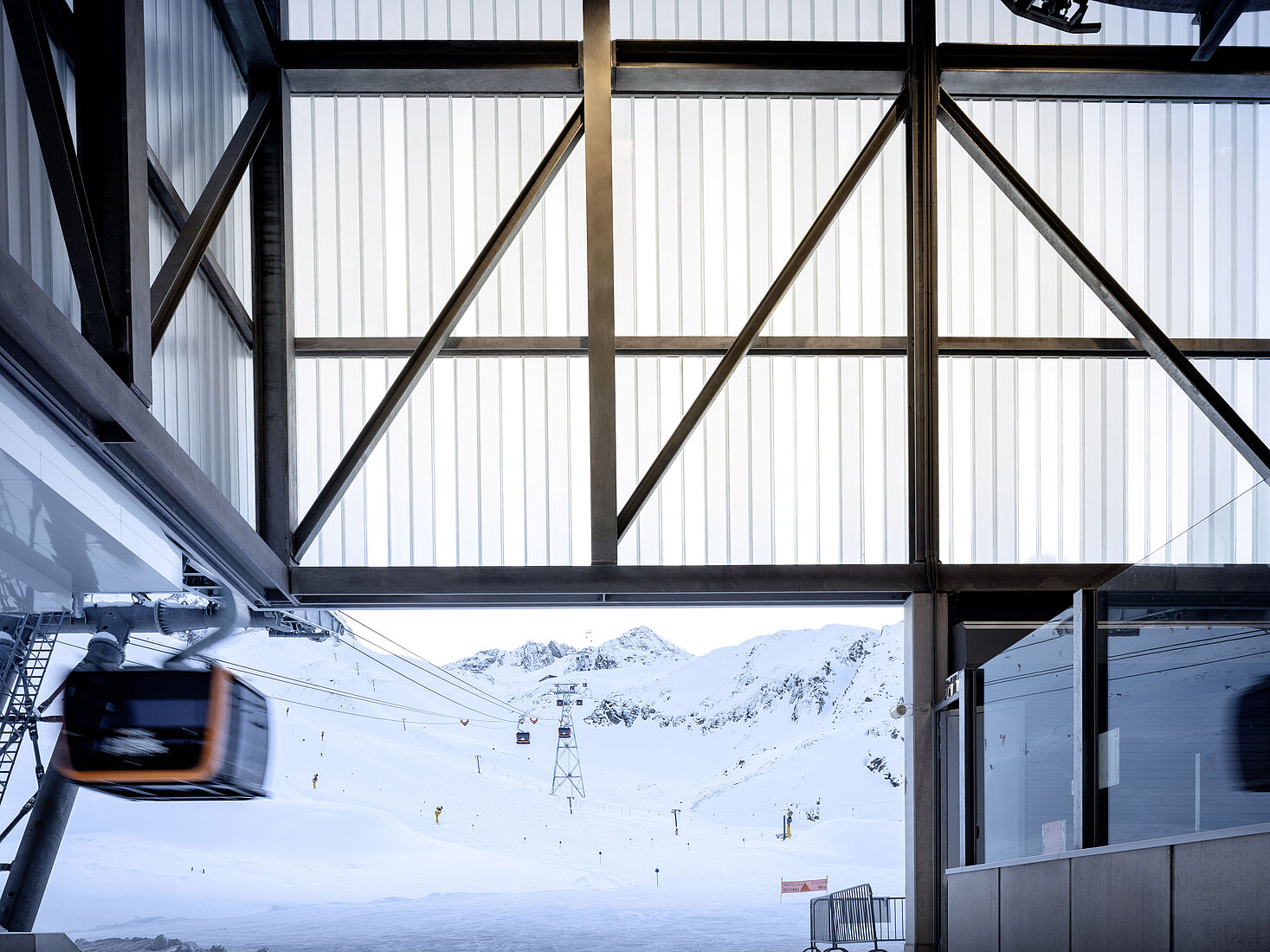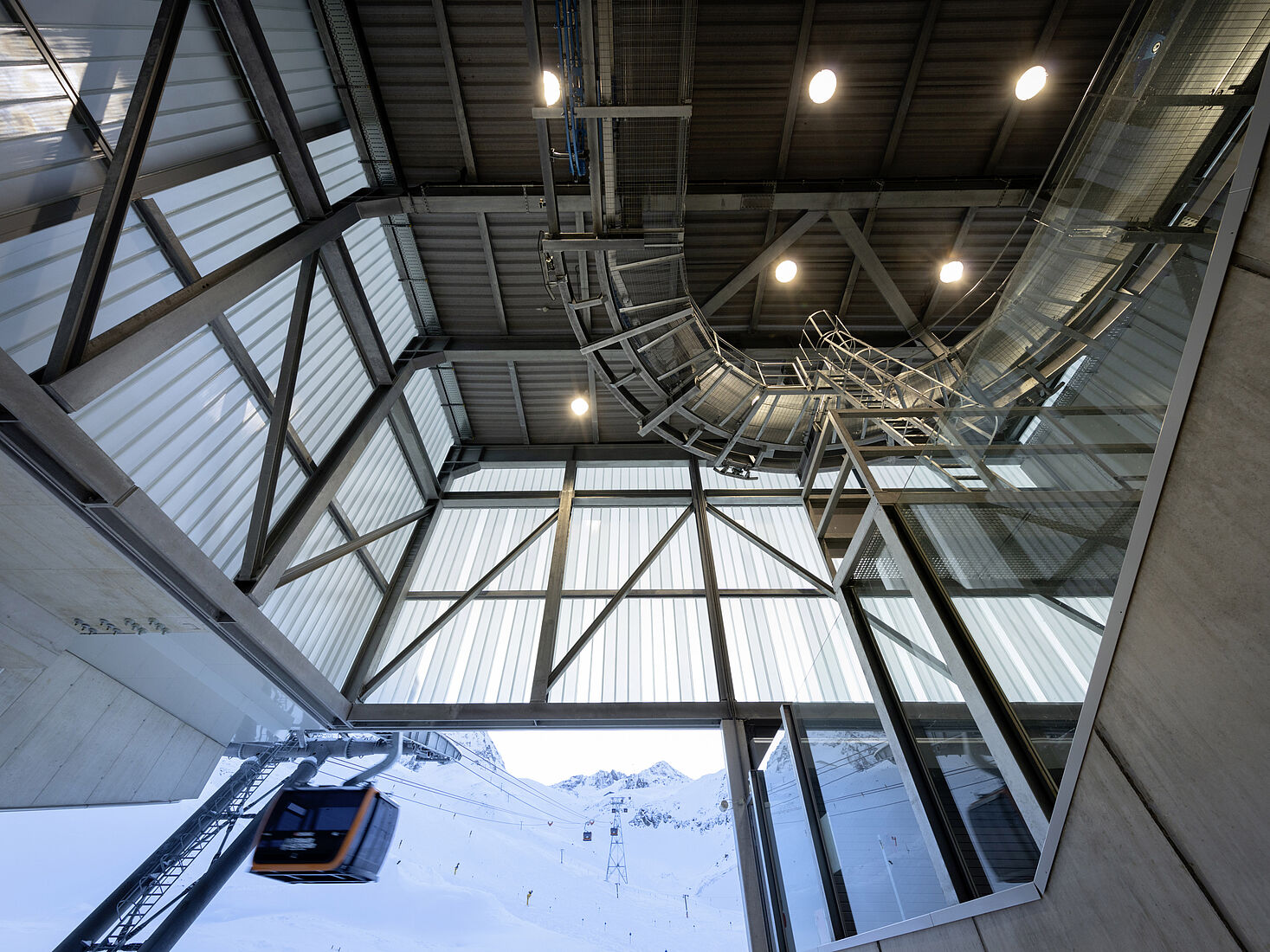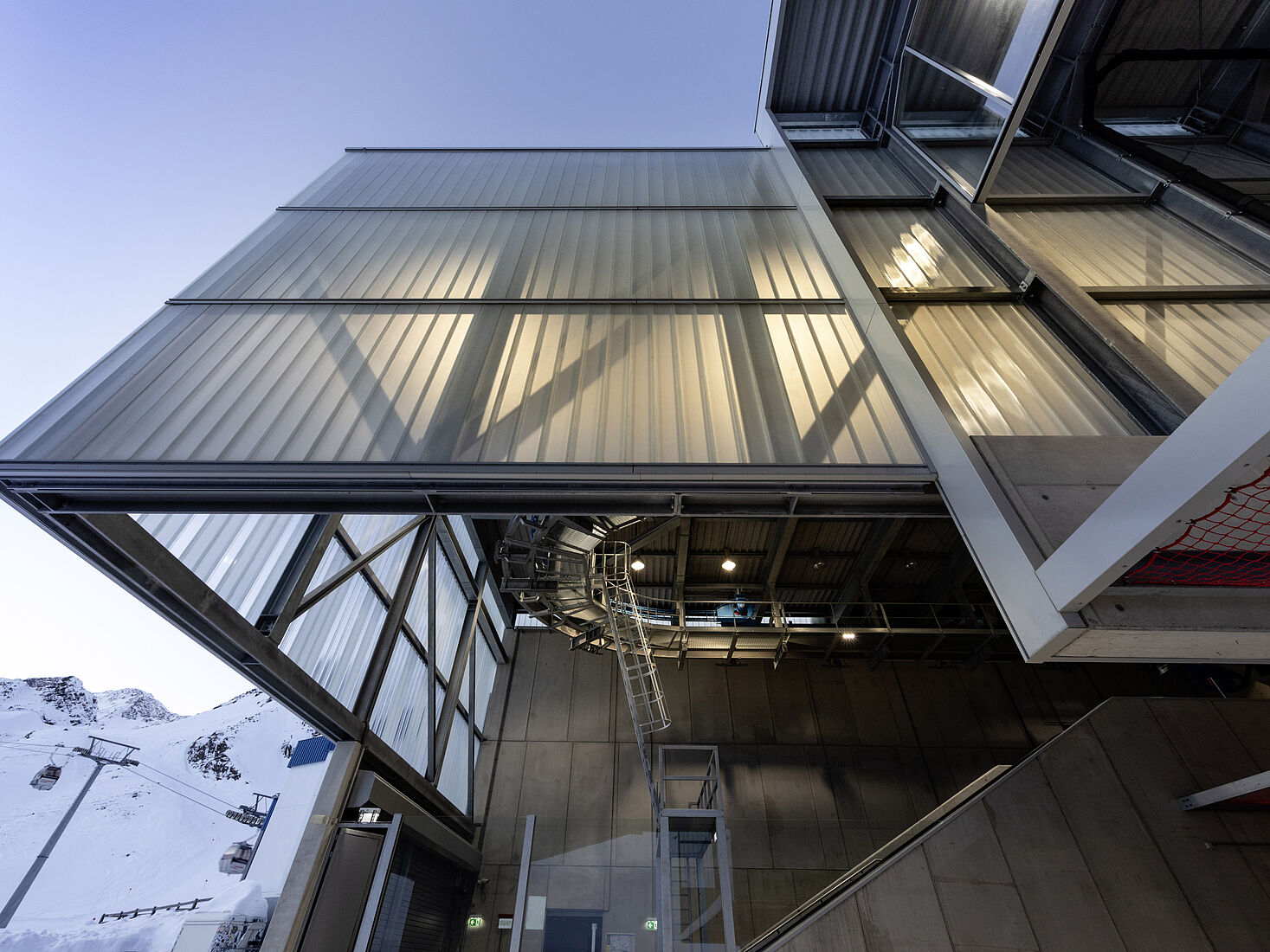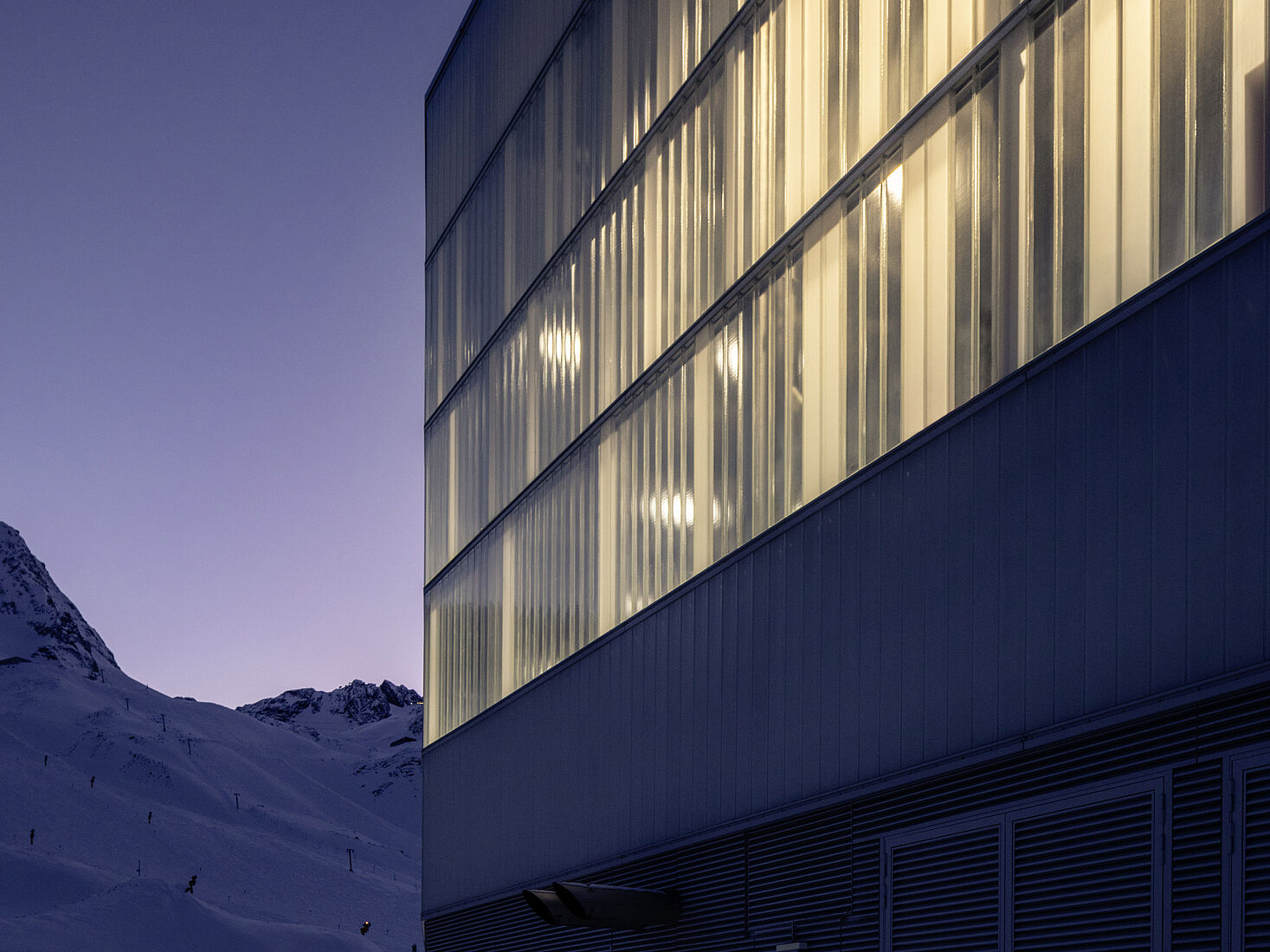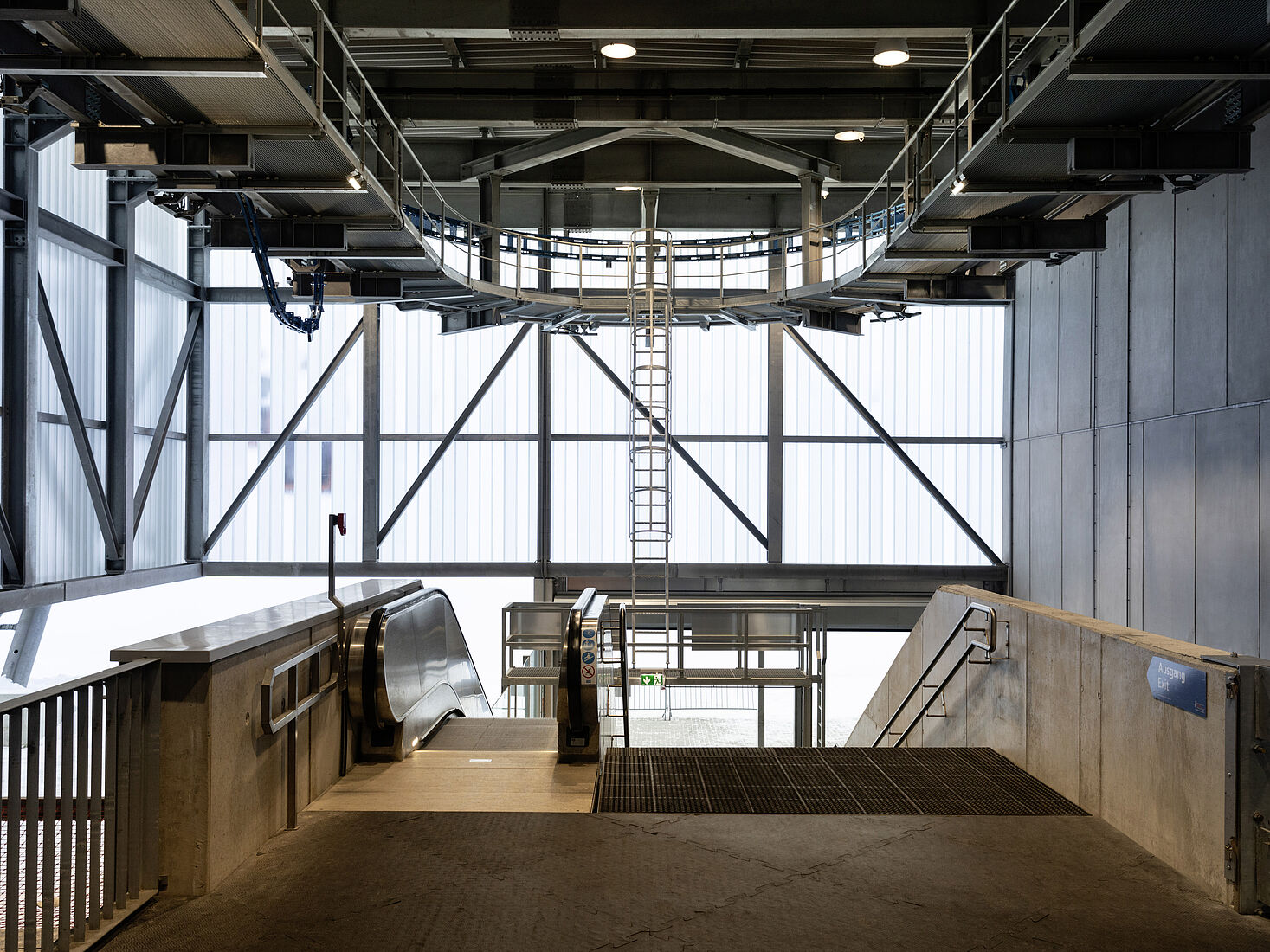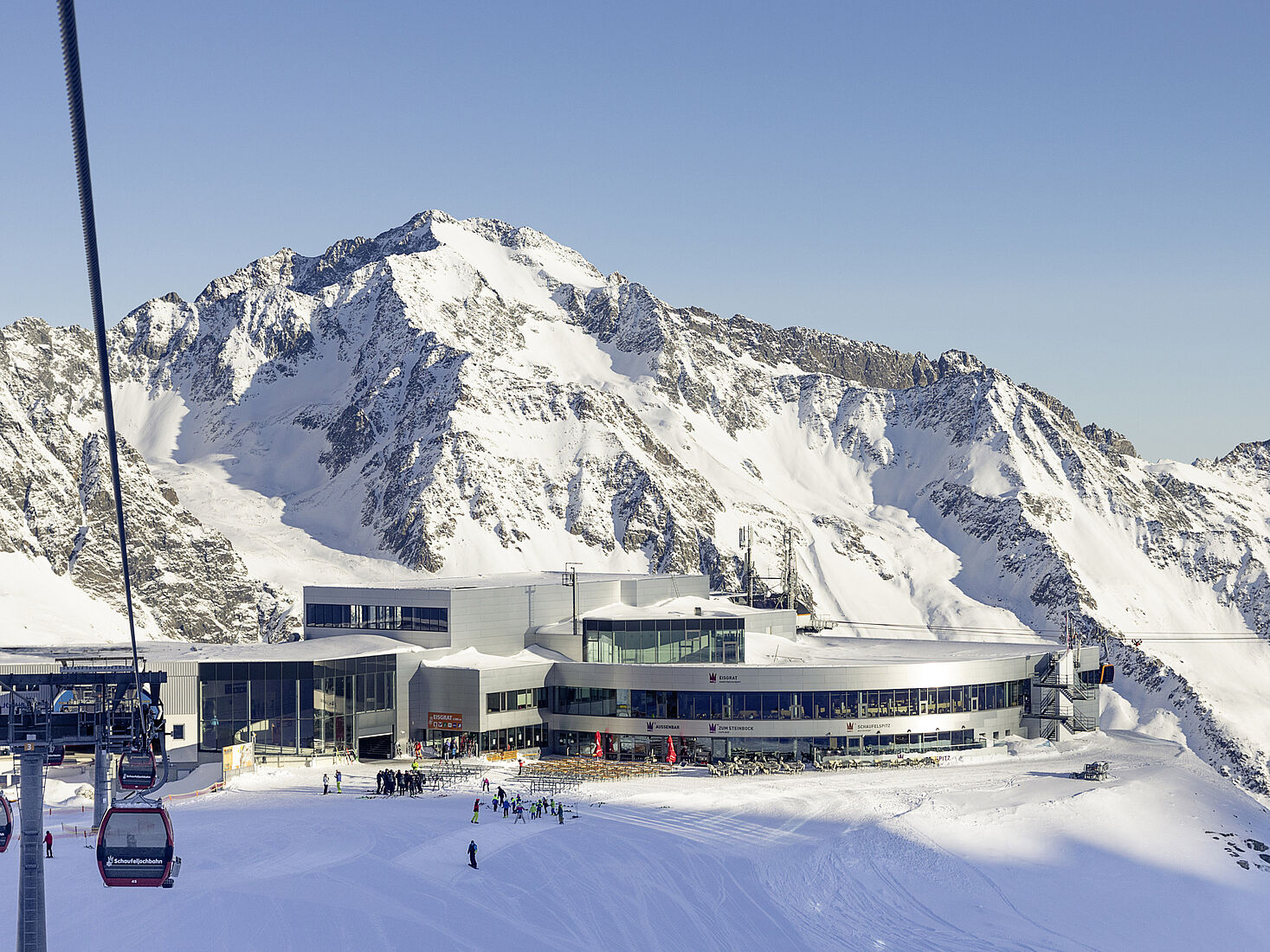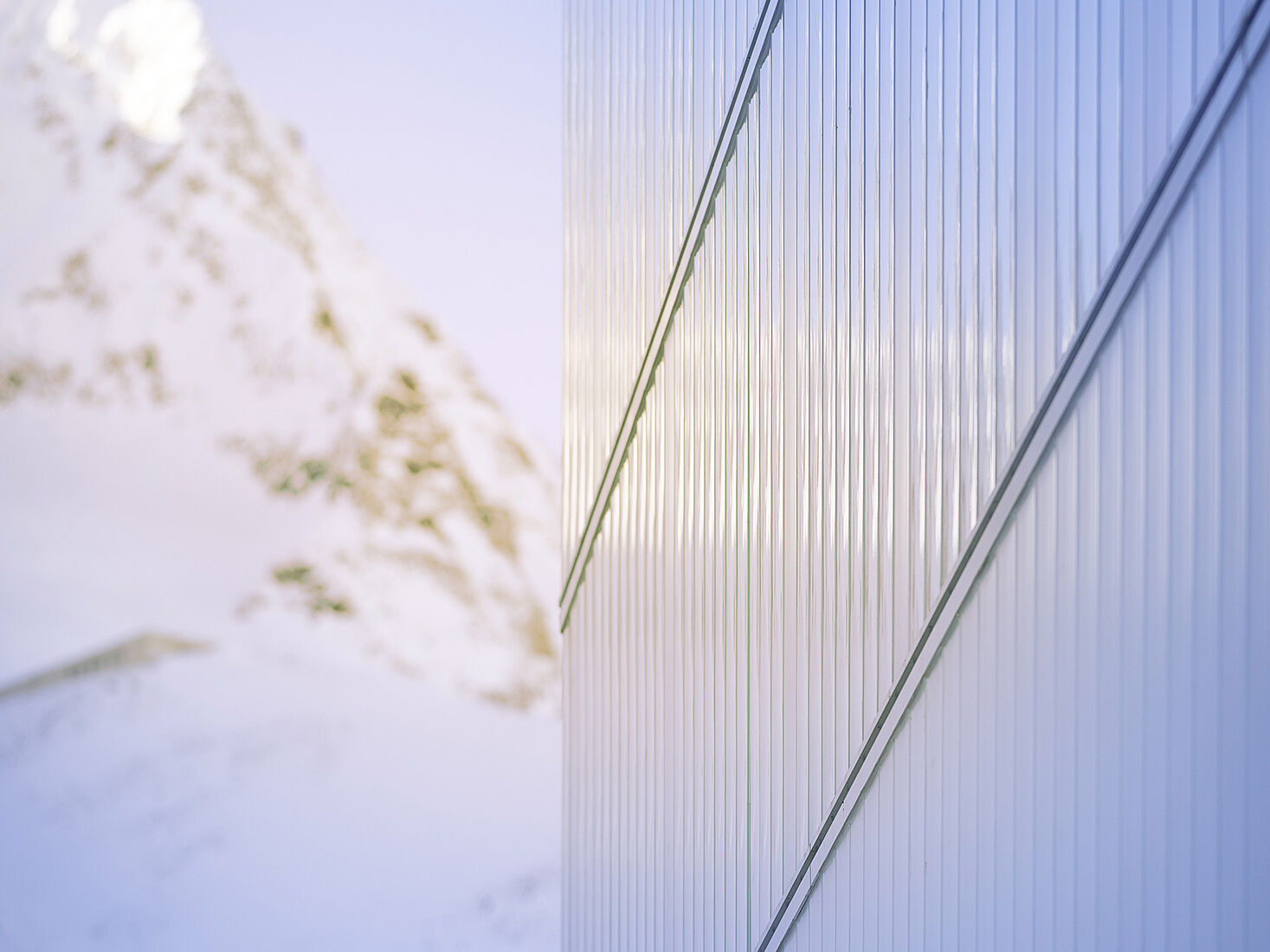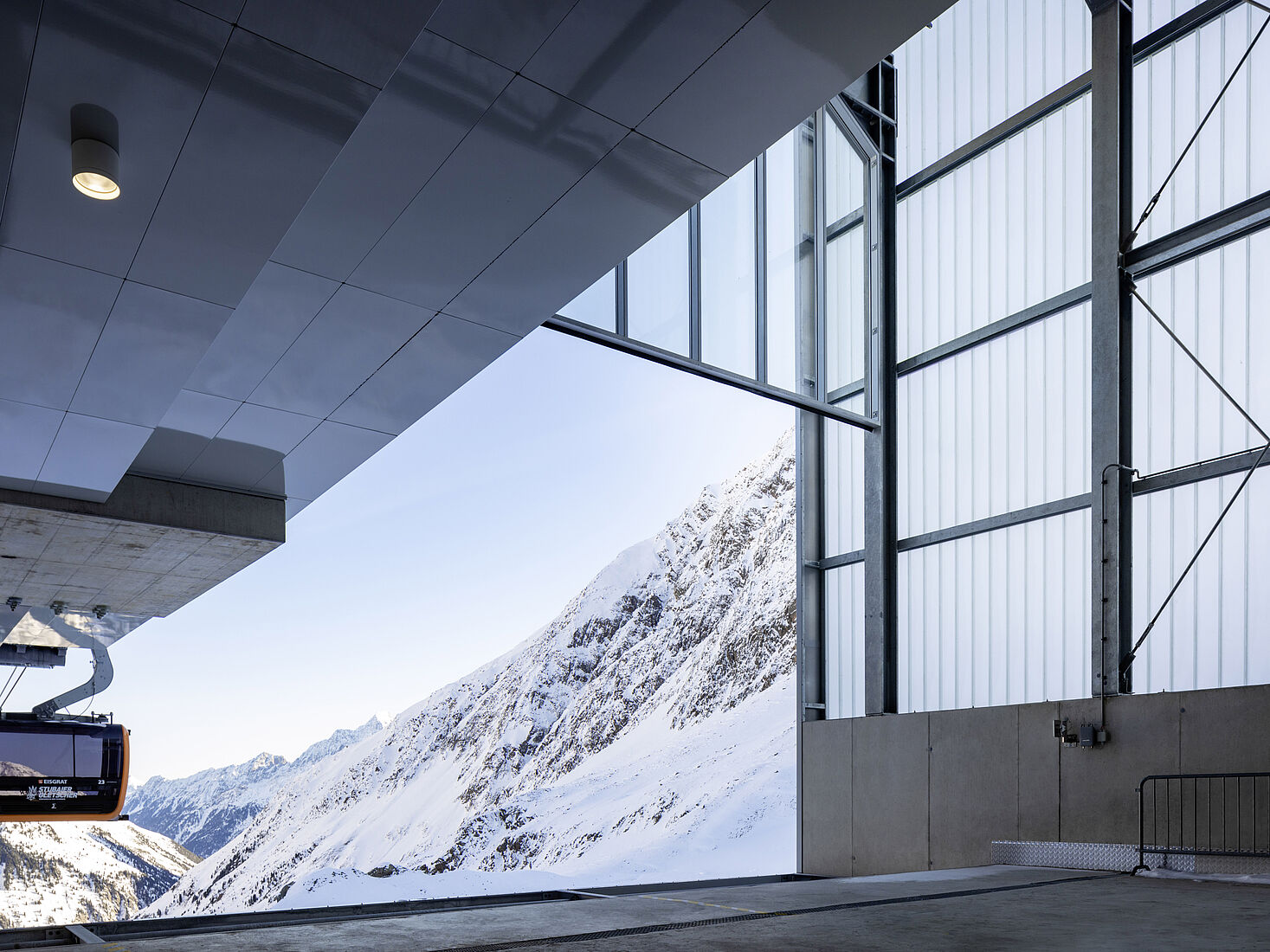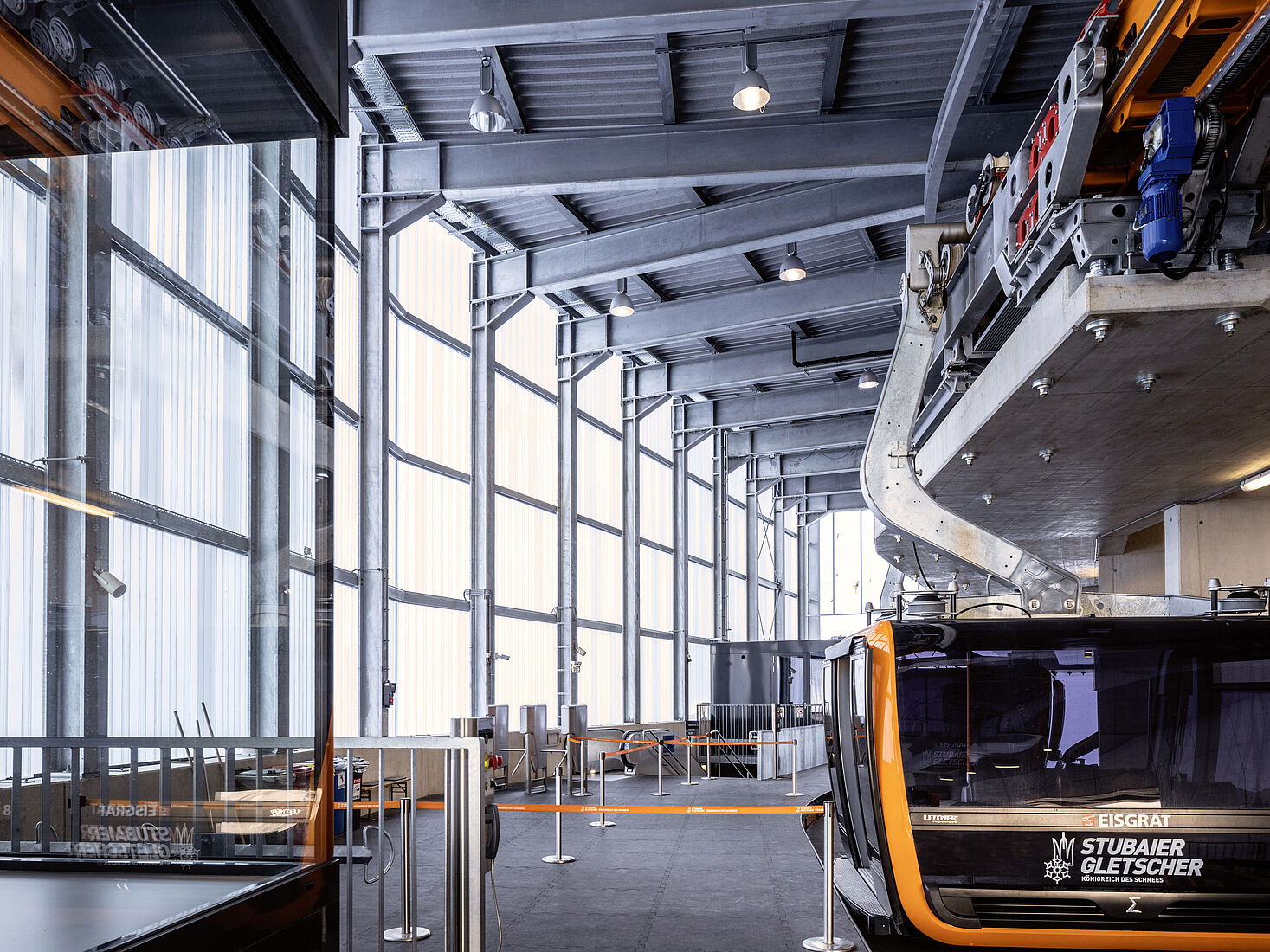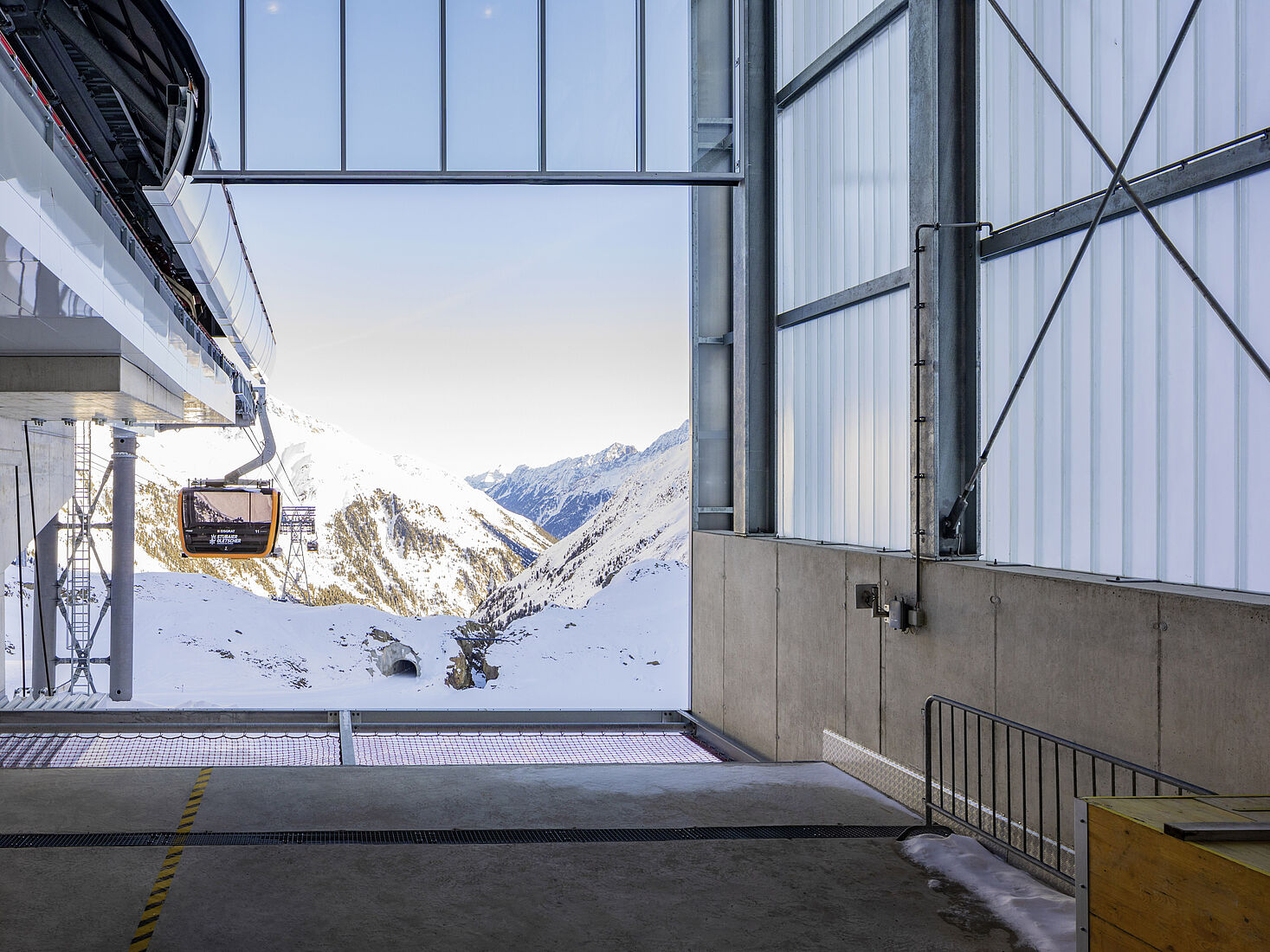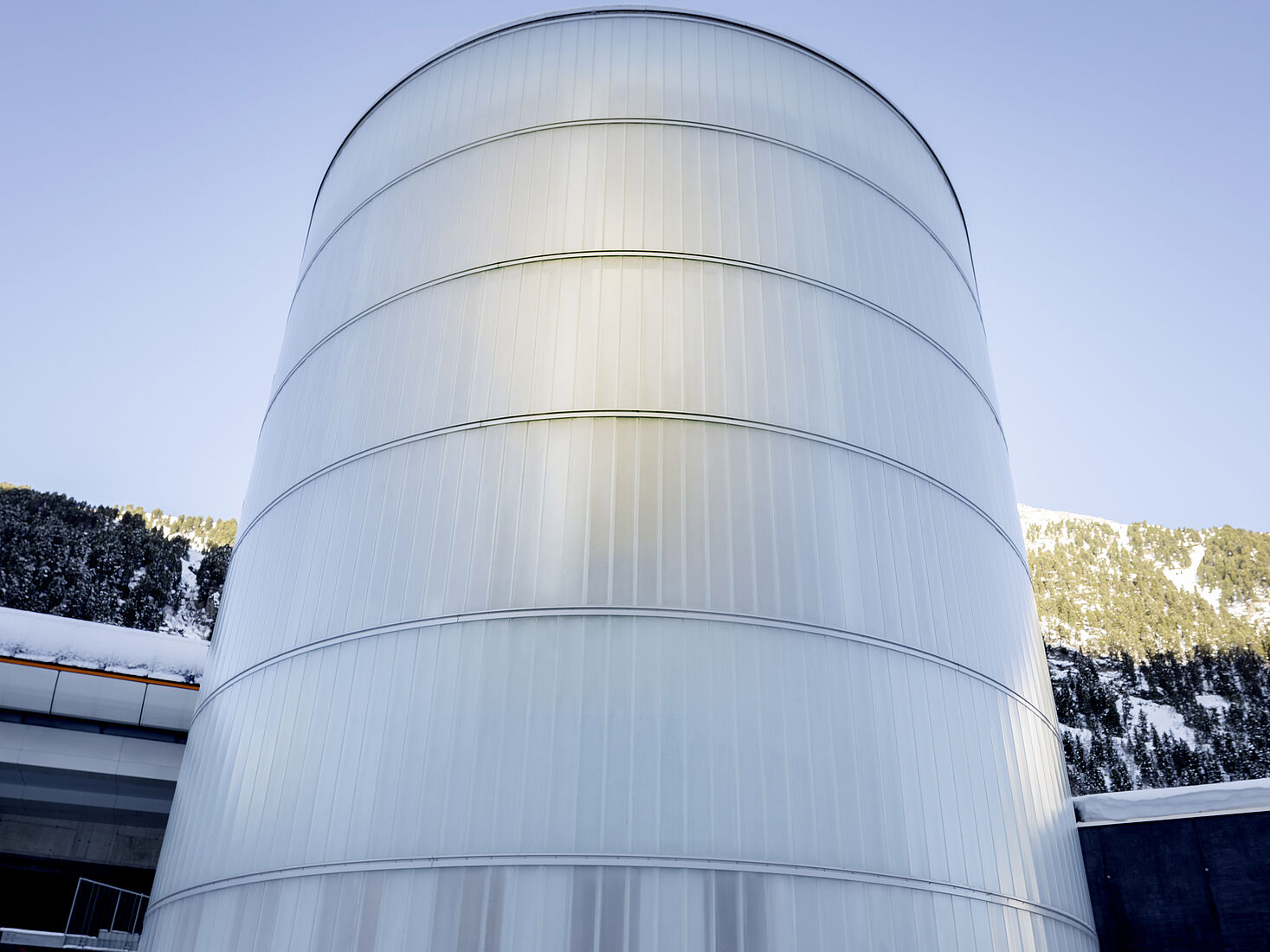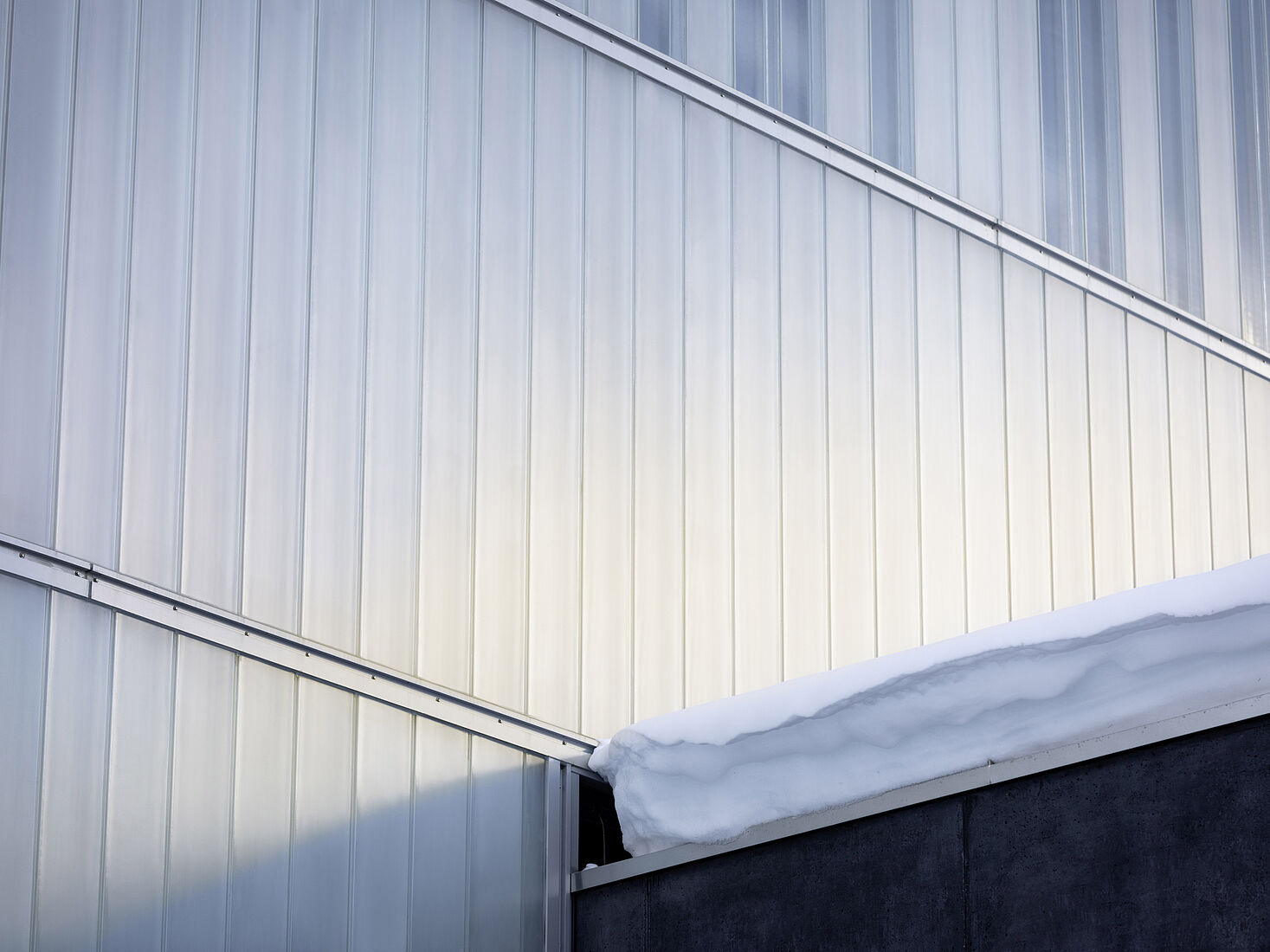3S Eisgratbahn Stubaital
Neustift, Austria
- BIGSEE Architecture Award (2019)
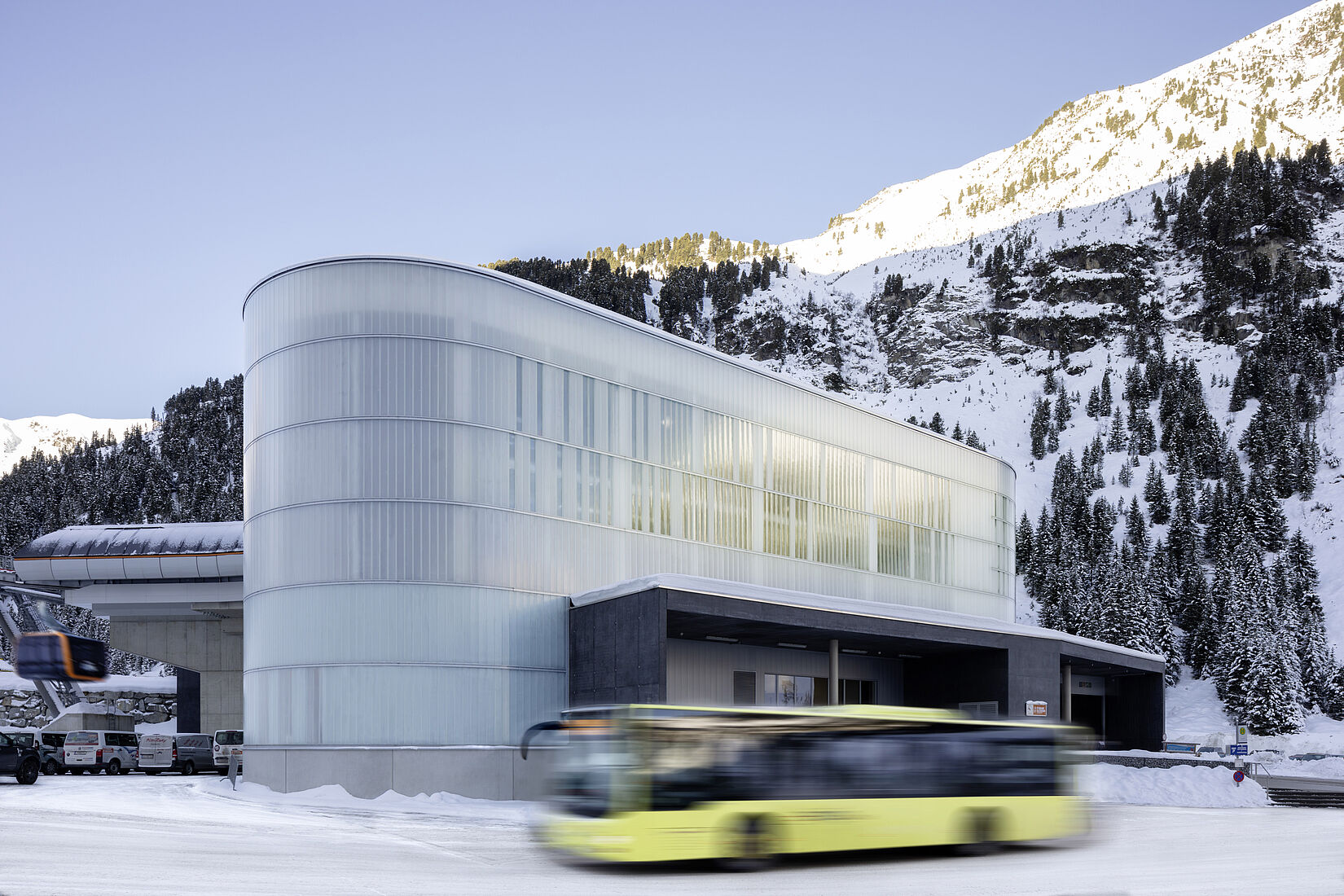
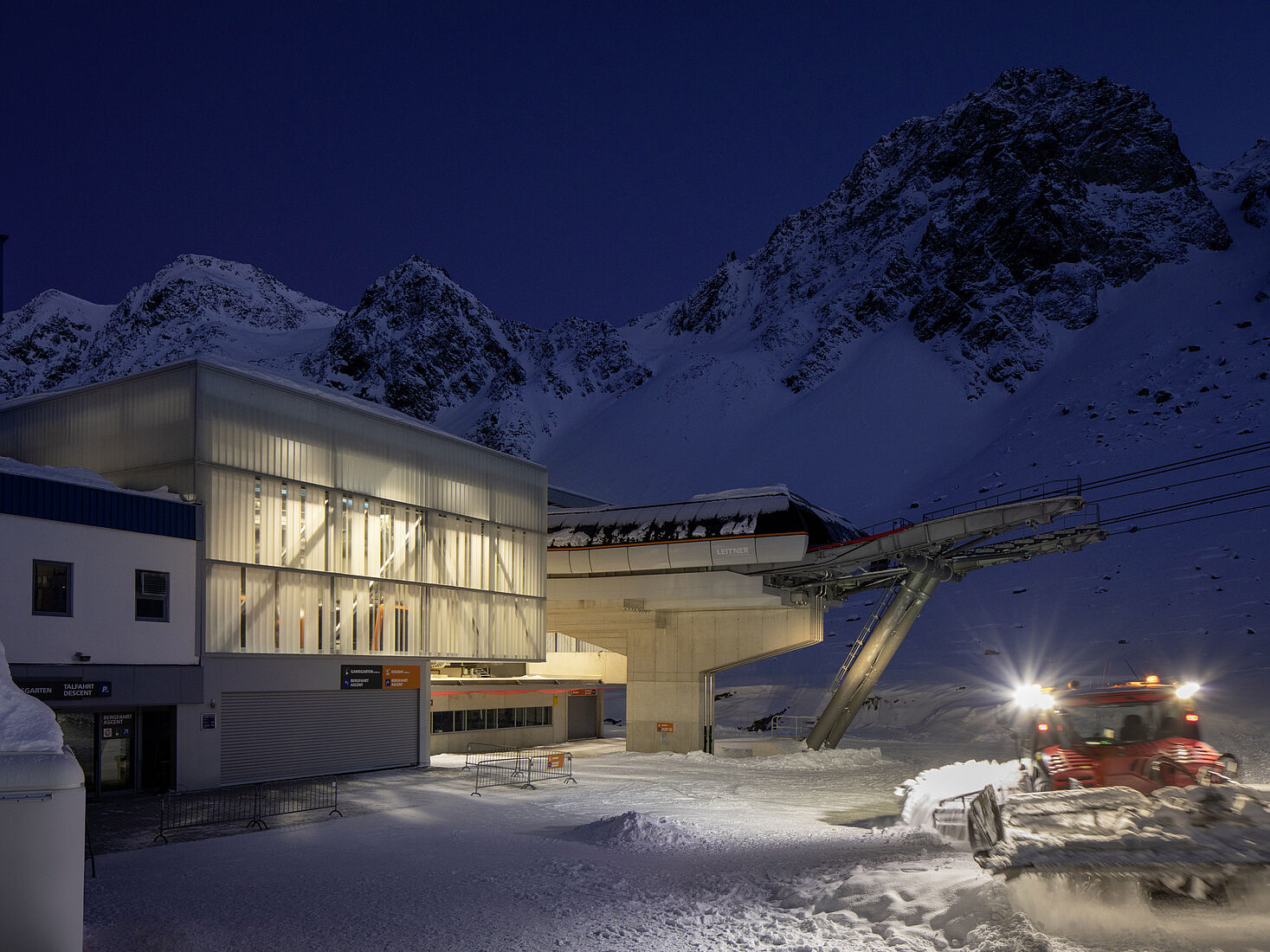
With guaranteed snow from October to June, the Stubai Glacier is one of the most prominent ski resorts in the Alps. The 4.7-kilometre-long 3S Eisgratbahn, currently the longest three-cable gondola lift in the region, was built to transport guests efficiently. The three architecturally distinctive station buildings – designed by ao-architekten from Innsbruck – respond precisely to their location, function and topography.
The valley, intermediate and mountain stations are located far apart from each other, both vertically and horizontally, with no visual connection. This spatial separation led to the development of three self-sufficient building typologies, which are nevertheless linked by a design continuum: profiled glass as a consistent material element.
The valley station, solidly constructed in in-situ concrete, is located directly next to the visitor car park. A black-coloured concrete protective wall running along the side protects against the Ruetz torrent and potential avalanches. The front facing the cable car contrasts with a rounded façade made of vertically joined profiled glass – partly clear, partly sandblasted. This modulated surface lends the volume a sense of lightness and formally alludes to the technology of the cable car.
The intermediate station was connected to an existing building at the side and marks a functional joint point due to the angle of the route. Here, a glazed upper floor rests on a solid base made of 5,000 cubic metres of concrete and 50 piles. The façade made of profiled glass – also alternating between matt and clear elements – extends over three levels and creates bright, sheltered spaces that offer views and orientation.
At the end point, the mountain station at over 2,900 metres, the new building intervenes in the heterogeneous structure of existing catering and technical buildings. A clearly defined building volume with an aluminium façade redefines the ensemble. Large glass surfaces and the targeted use of profiled glass create bright transition zones and guide visitors into the connecting cable car system.
Here, profiled glass plays a role that goes far beyond the purely functional: it structures, connects and creates visual identity along the entire route.
